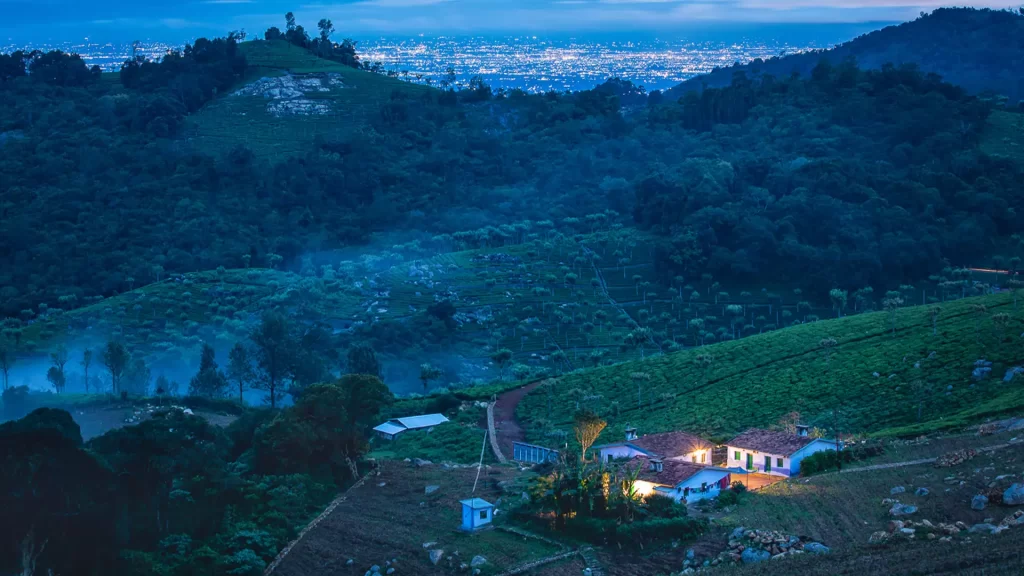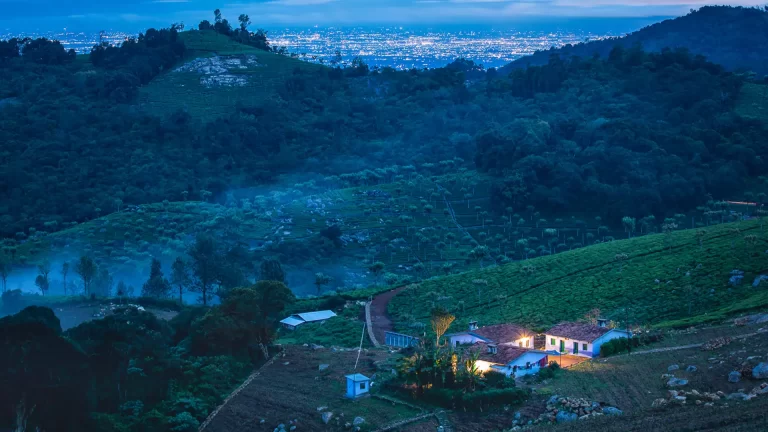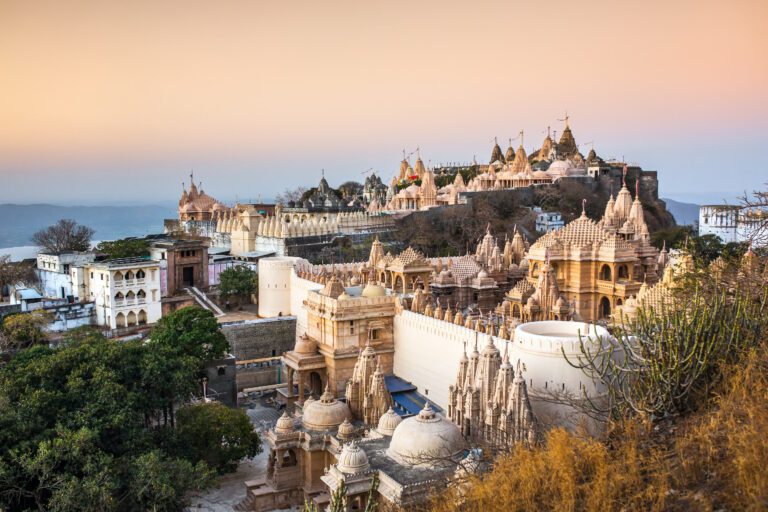The Nilgiri Hills, also known as the Blue Mountains, are a prominent range in southern India that captivates travelers with their breathtaking landscapes, rich biodiversity, and vibrant cultural heritage. This blog dives into the fascinating world of the Nilgiri Hills, addressing key questions like where they are located, what makes them unique, and why they are a must-visit destination.
Table of Contents
Where is Nilgiri Hills Located?
The Nilgiri Hills are situated in the westernmost part of Tamil Nadu, extending into the neighboring states of Kerala and Karnataka. These hills are part of the larger Western Ghats, a UNESCO World Heritage site, and cover an area of approximately 2,500 square kilometers. The Nilgiris are a junction between these three states, with Udhagamandalam (Ooty) being the most popular hill station nestled within them.

Ooty, often referred to as the “Queen of Nilgiri Hills,” serves as the gateway to this majestic region. The town is well-connected by road and rail, with the Nilgiri Mountain Railway being a UNESCO World Heritage site. The hill station is around 250 kilometers from Bangalore and 85 kilometers from Coimbatore, making it a convenient getaway for both locals and tourists.
The Unique Charm of Nilgiri Hills
The Nilgiri Hills are renowned for their unique topography, which ranges from lush green valleys to misty peaks. The name “Nilgiri” translates to “Blue Mountains,” a reference to the bluish hue of the hills when viewed from a distance, caused by the dense eucalyptus trees that populate the region.
These hills are home to a wide variety of flora and fauna, making them a biodiversity hotspot. The Nilgiri Biosphere Reserve, established in 1986, is part of UNESCO’s Man and the Biosphere Program and encompasses several national parks and wildlife sanctuaries, including the Mudumalai National Park, Mukurthi National Park, and Silent Valley National Park.
The Nilgiri Biosphere Reserve: A Conservation Haven
The Nilgiri Biosphere Reserve spans across Tamil Nadu, Kerala, and Karnataka, covering an area of 5,520 square kilometers. This reserve is a sanctuary for numerous endangered species, such as the Nilgiri Tahr, an endemic mountain goat that is found only in this region. The reserve also houses the Bengal tiger, Indian elephant, and many species of birds, plants, and insects.
The reserve’s diverse ecosystems, ranging from tropical rainforests to grasslands, make it a crucial area for conservation efforts. Visitors can explore the biosphere through guided tours, safaris, and trekking expeditions, gaining insights into the rich biodiversity that the Nilgiri Hills have to offer.
The Cultural Heritage of Nilgiri Hills

Apart from its natural beauty, the Nilgiri Hills are steeped in cultural heritage. The indigenous tribes of the Nilgiris, such as the Todas, Kotas, and Badagas, have preserved their traditional ways of life for centuries. Visitors can experience their unique culture through village visits, traditional craft workshops, and local festivals.
Ooty, Coonoor, and Kotagiri are the three main towns in the Nilgiris that offer a blend of colonial charm and modern amenities. These hill stations are dotted with tea plantations, botanical gardens, and historical landmarks, making them ideal destinations for nature lovers, history enthusiasts, and adventure seekers.
How to Experience the Best of Nilgiri Hills
- Ride the Nilgiri Mountain Railway: This toy train ride is a must-do when visiting the Nilgiri Hills. The scenic journey from Mettupalayam to Ooty takes you through winding tracks, lush forests, and picturesque valleys.
- Explore Ooty: Visit the Ooty Botanical Gardens, take a boat ride on Ooty Lake, and trek to Doddabetta Peak, the highest point in the Nilgiris.
- Discover Coonoor: Known for its tea gardens, Coonoor offers attractions like Sim’s Park, Dolphin’s Nose, and Lamb’s Rock.
- Trek in the Nilgiri Biosphere Reserve: For adventure enthusiasts, trekking in the Nilgiri Biosphere Reserve provides an opportunity to witness the region’s diverse wildlife and stunning landscapes.
- Visit a Tea Plantation: The Nilgiri Hills are famous for their tea, and a visit to a tea plantation offers insights into the tea-making process, along with tasting sessions.
Why is the Nilgiri Tahr Endangered?
The Nilgiri Tahr is a species of mountain goat that is native to the Nilgiri Hills and surrounding regions. Unfortunately, the population of this majestic animal has dwindled over the years due to habitat loss, poaching, and competition for resources with domestic livestock. Conservation efforts are ongoing, and the Nilgiri Biosphere Reserve plays a crucial role in protecting this species.
The Nilgiri Hills offer a unique blend of natural beauty, cultural heritage, and biodiversity that is unparalleled in India. Whether you’re looking to explore the wildlife in the Nilgiri Biosphere Reserve, enjoy a peaceful retreat in Ooty, or experience the rich traditions of the indigenous tribes, the Nilgiris have something for everyone. So, the next time you wonder, “Where is Nilgiri Hills?” remember that it’s not just a location on the map—it’s a destination that promises an unforgettable experience.














